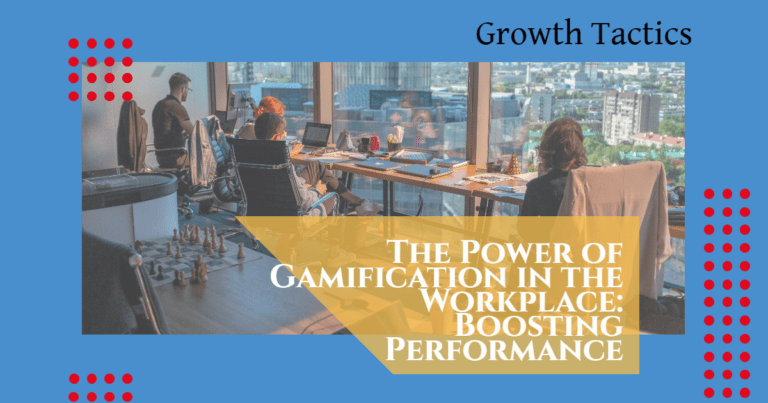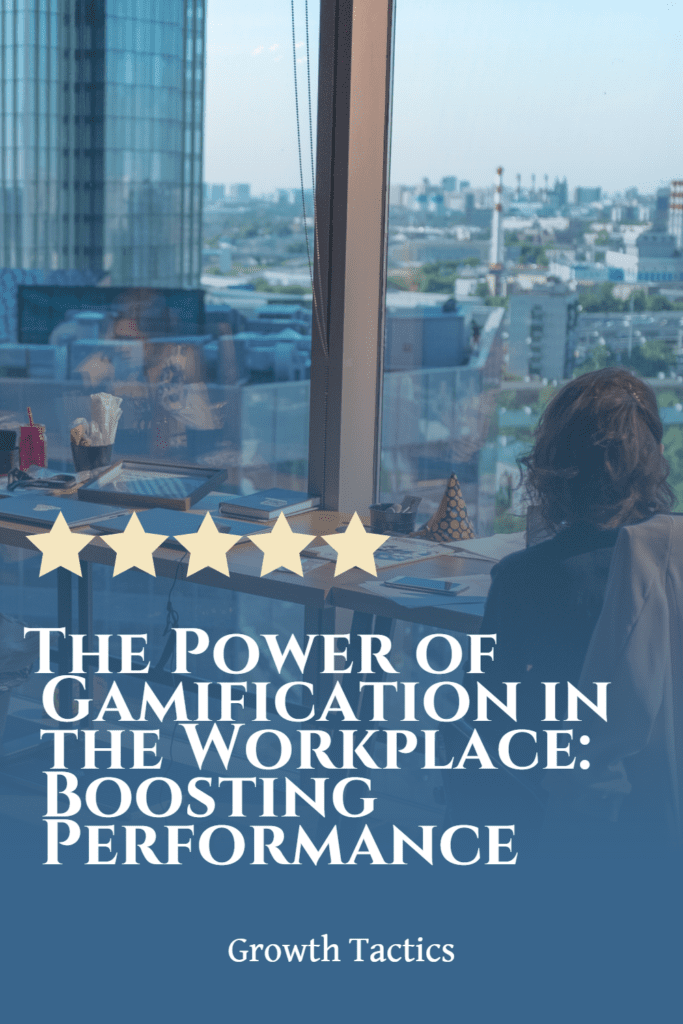In this article, we’ll explore how incorporating game elements into the work environment can increase employee engagement, motivation, and performance. We’ll examine different examples of gamification in the workplace, discuss its benefits, and provide practical advice on how to implement gamification successfully.
Jump To Section
What is Gamification and How Does it Work?
Gamification is incorporating game mechanics and elements into non-gaming contexts, such as the workplace. These game elements can include leaderboards, badges, rewards, and friendly competition. Gamification aims to motivate and engage employees by tapping into their natural desire to achieve goals, earn recognition, and have fun while doing so.
The Benefits of Gamification in the Workplace
Gamification in the workplace isn’t just a fun and trendy concept—it offers a range of tangible benefits for both employees and organizations. Let’s dive into some of the key advantages of incorporating gamification into your work environment:
-
Increased Employee Engagement: Gamification makes work more enjoyable and interactive, resulting in higher levels of employee engagement. When employees are actively involved in a gamified environment, they feel a greater sense of purpose and fulfillment in their tasks. This increased engagement leads to improved productivity and job satisfaction.
-
Enhanced Motivation: By leveraging game elements like rewards, badges, and levels, gamification taps into the natural human desire to achieve goals and earn recognition. Employees are motivated to perform at their best and surpass their own expectations. With gamification, employees are more likely to take ownership of their work and go the extra mile.
-
Clear Goal Setting: Gamification provides employees with clear goals and objectives, allowing them to understand what they need to accomplish. This clarity helps employees stay focused and channel their efforts towards specific targets, leading to improved performance and efficiency.
-
Immediate Feedback: Gamification facilitates immediate feedback, which is crucial for employee growth and development. Employees receive instant updates on their progress and performance, allowing them to identify areas for improvement and take corrective actions promptly. This feedback loop creates a continuous learning environment.
-
Healthy Competition: Introducing elements of competition through leaderboards and challenges can foster healthy competition among employees. This friendly rivalry encourages individuals to strive for excellence and outperform their colleagues positively and constructively. As a result, overall team performance is elevated.
-
Increased Knowledge Retention: Traditional training methods often struggle to keep employees engaged and retain information. However, gamification in training programs makes learning more immersive and memorable. By incorporating interactive quizzes, simulations, and challenges, employees are actively involved in the learning process, leading to improved information retention.
-
Positive Work Culture: Gamification promotes a positive work culture by fostering teamwork, collaboration, and camaraderie among employees. By working together towards common goals and celebrating achievements, employees feel a sense of belonging and camaraderie, leading to a more harmonious and supportive work environment.
-
Improved Employee Well-Being: The inherent fun and enjoyment of gamification can have a positive impact on employee well-being. Engaging in gamified activities reduces stress and tension, boosts mood, and increases overall job satisfaction. Employees feel happier and more fulfilled within their roles.
Implementing gamification in the workplace can yield significant benefits for employees and organizations alike. By increasing engagement, motivation, and goal clarity, while also fostering healthy competition, promoting knowledge retention, and creating a positive work culture, gamification can transform your workplace into a thriving and high-performing environment.
So, if you’re looking to elevate employee performance and enhance the overall workplace experience, consider incorporating gamification into your organization. With the right planning and implementation, the benefits of gamification are well within your reach.
How to Implement Gamification Successfully
Implementing gamification requires careful planning and consideration. Here are some key steps to follow:
-
Identify Objectives: Clearly define the business goals you want to achieve through gamification, such as improving employee morale or increasing customer engagement.
-
Choose the Right Platform: Select a gamification platform that aligns with your organization’s needs and resources. Consider factors like ease of use, scalability, and reporting capabilities.
-
Design Game Elements: Determine the specific game elements you want to incorporate, such as points, badges, levels, or challenges. Make sure they are aligned with your objectives and resonate with your employees.
-
Introduce Gamification Gradually: Implement gamification in stages to allow employees to adapt and provide feedback. Start with a pilot program and gather insights before scaling it across the organization.
-
Continuously Monitor and Adjust: Regularly analyze the effectiveness of your gamification program and make adjustments based on employee feedback and performance metrics. This will ensure its ongoing success.
Examples of Gamification in the Workplace
Let’s delve into some real-world examples of how gamification has been successfully implemented in various workplaces. These examples will demonstrate the versatility and effectiveness of gamification in different industries and organizational contexts, showcasing its potential to boost engagement and performance.
Example 1: Tech Company Training Program
A prominent technology company recognized the need to enhance their onboarding process for new employees. They wanted to create a memorable and engaging experience to ensure that newcomers quickly grasped essential knowledge and skills. So, they decided to gamify their training program.
They incorporated interactive quizzes, challenges, and rewards within an online learning platform. As employees completed modules and passed quizzes, they earned points and unlocked badges. The company utilized leaderboards to showcase top performers, fostering healthy competition and motivation. This gamified approach resulted in higher knowledge retention, increased engagement, and accelerated onboarding for new employees.
Example 2: Retail Sales Incentives
A retail company wanted to motivate their sales force and improve customer service. They introduced a gamification initiative to drive friendly competition and reward outstanding performance. Sales representatives earned points, badges, and levels based on their performance metrics, such as meeting sales targets, receiving positive customer feedback, and achieving excellent product knowledge.
The company displayed a live leaderboard where employees could see their rankings and track progress. As a result, the sales team became highly engaged and motivated to outperform each other. This friendly competition not only improved sales results but also elevated the overall customer experience.
Example 3: Wellness Programs
In the realm of employee wellness, gamification has proven to be highly effective. Many organizations have implemented gamified wellness programs to encourage employees to adopt healthier habits and improve overall well-being.
In these programs, employees earn points and rewards for various healthy activities, such as participating in fitness challenges, logging exercise sessions, or achieving specific wellness goals. Leaderboards and team-based challenges create a sense of camaraderie and friendly competition among employees. These gamified wellness programs have been successful in boosting employee engagement, improving overall health outcomes, and fostering a culture of well-being within organizations.
Example 4: Project Management and Collaboration
Even project management and collaboration can benefit from gamification. Some companies have incorporated game elements into their project management software to incentivize and reward collaboration, task completion, and meeting project milestones.
Employees earn points or badges for timely task completion, effective communication, and successful project outcomes. This approach increases accountability, promotes teamwork, and enhances overall project efficiency. By gamifying project management and collaboration, organizations have experienced improved productivity, enhanced communication, and a stronger sense of ownership among team members.
These examples only scratch the surface of how gamification can be applied and customized to suit various workplace contexts. The possibilities are vast, and organizations across industries are exploring innovative ways to gamify their work environments to drive engagement, motivation, and performance.
Best Practices for Internal Gamification
Let’s delve deeper into some best practices for implementing gamification in your workplace.
1. Define Clear Objectives
Like any great game, it’s important to define clear objectives when creating a gamified experience for your employees. What do you want to achieve? Do you want to improve collaboration, increase productivity, or boost employee engagement? Understanding your objectives will guide you in designing the right game mechanics and rewards that align with your overall goals.
2. Incorporate Friendly Competition
Competition can be a powerful motivator. By introducing a healthy dose of competition in your gamification strategy, you encourage employees to strive for excellence. Whether it’s through leaderboards, challenges, or team-based competitions, make sure to create a sense of friendly rivalry that pushes individuals to go the extra mile.
3. Provide Frequent Feedback and Recognition
Instant feedback and recognition are essential in a successful gamification program. Remember, the journey is just as important as the destination. Regularly provide feedback to your employees, acknowledging their progress and highlighting their achievements. This fuels their sense of accomplishment and encourages them to keep pushing forward.
4. Create Meaningful and Challenging Tasks
One of the key principles of gamification is to create meaningful and challenging tasks that keep your employees engaged. Ensure that the tasks align with your company’s objectives and employees’ personal goals. By striking the right balance between difficulty and achievability, you’ll keep your team motivated and invested in the gamified experience.
5. Offer Desirable Rewards
Rewards are the fuel that keeps the gamification fire burning bright. Choose rewards that are desirable to your employees and meaningful within your organization. It could be anything from monetary incentives to special privileges, recognition, or even unique experiences. The more enticing the rewards, the more engaged and motivated your employees will be.
6. Use Technology to Your Advantage
Leverage technology to make your internal gamification program seamless and enjoyable for everyone involved. Utilize gamification platforms or software to automate processes, track progress, and provide a user-friendly interface. This will not only simplify the implementation but also enhance the overall gaming experience for your employees.
7. Keep It Fresh and Evolving
To avoid gamification fatigue, keep your program fresh and evolving. Continuously introduce new challenges, levels, or missions to keep your employees excited and engaged. Regularly monitor feedback and tweak your gamification strategy accordingly. By staying adaptable and responsive, you’ll ensure a successful long-term gamification experience.
So there you have it! These best practices for internal gamification will help you create a vibrant and motivating work environment. Remember, the key is to make it fun, engaging, and relevant to your employees’ needs. Embrace the power of gamification and watch your team thrive!
Conclusion
Gamification in the workplace is a powerful tool for boosting employee engagement, motivation, and performance. Organizations can create a more enjoyable and productive work environment by applying game elements to work-related activities. Remember to set clear objectives, choose the right platform, and design game elements that align with your goals. With careful planning and implementation, gamification can transform your workplace and drive positive results.
We hope you found this blog post insightful and are inspired to explore the world of gamification in your organization.


